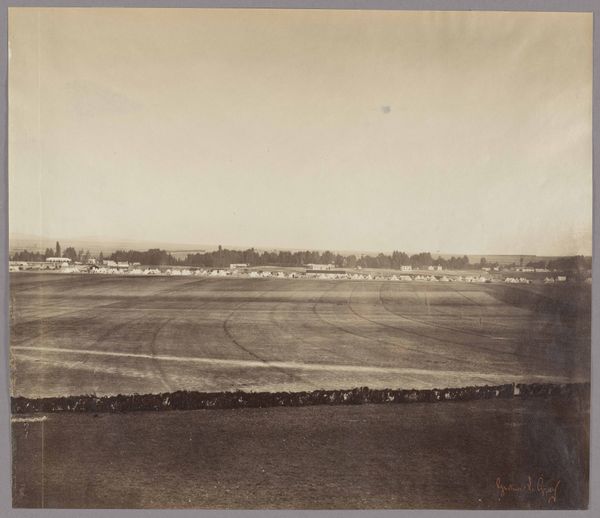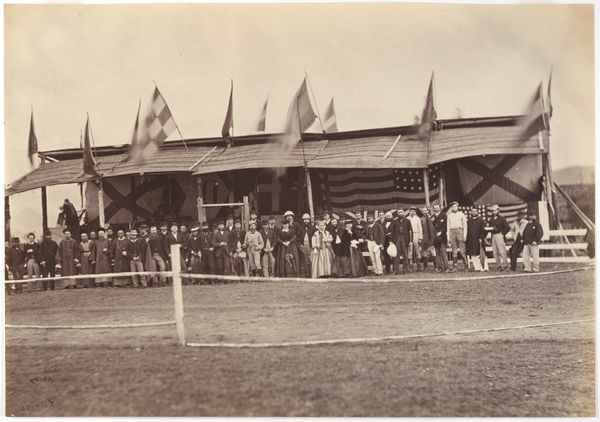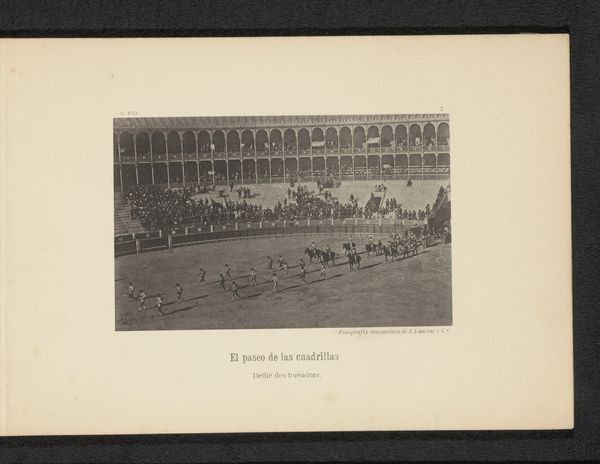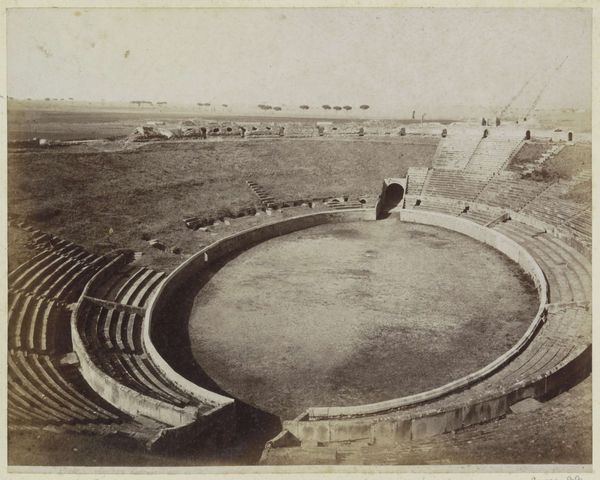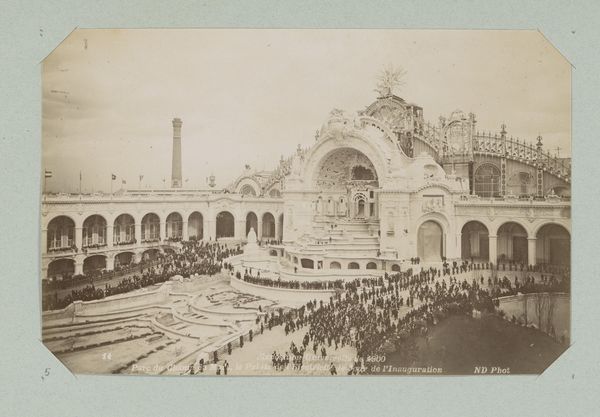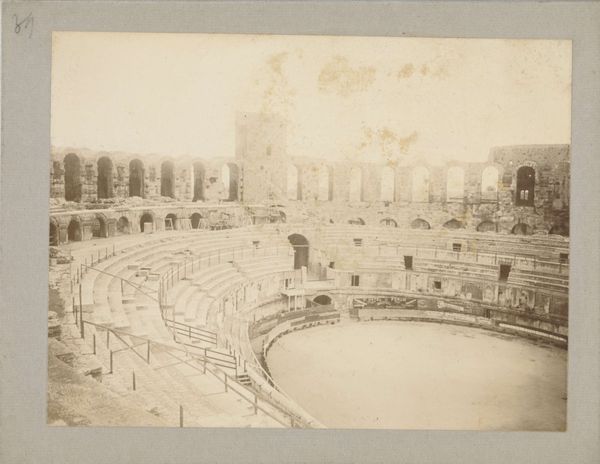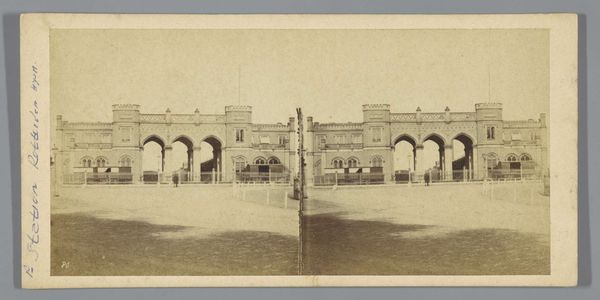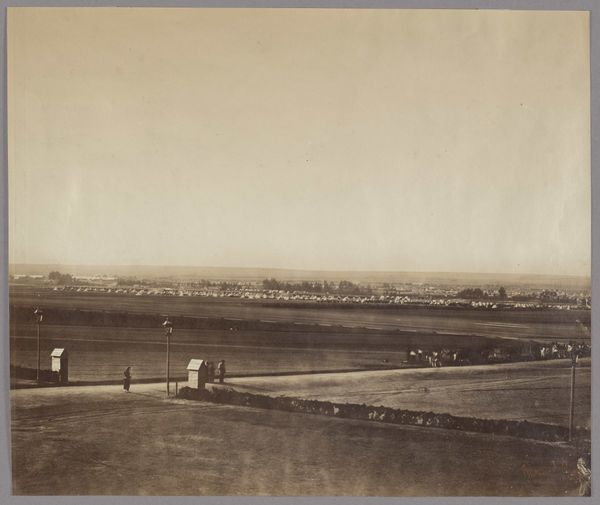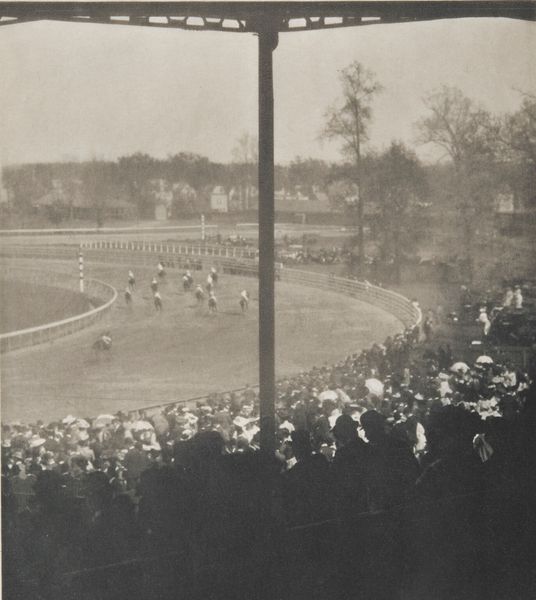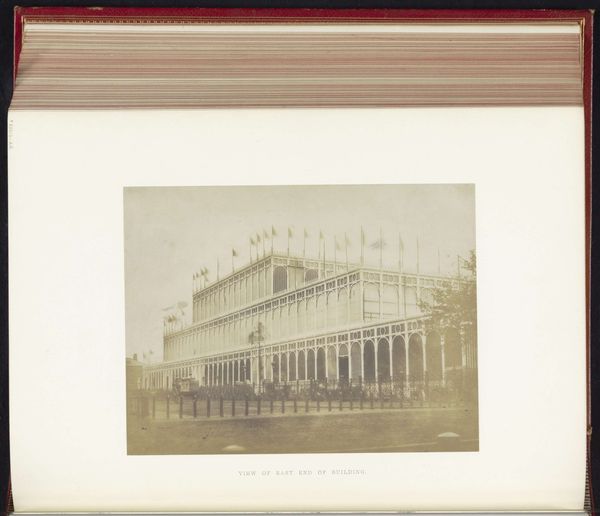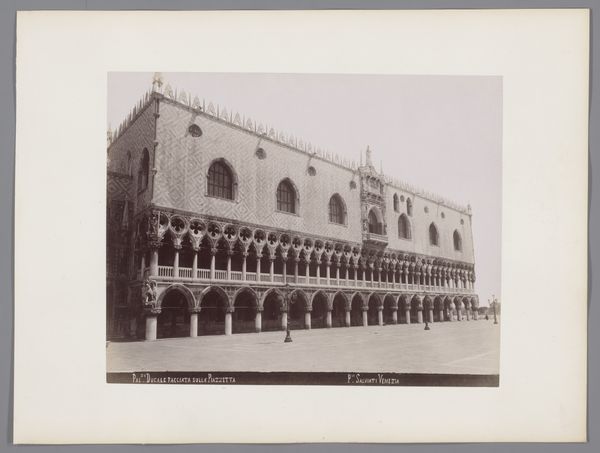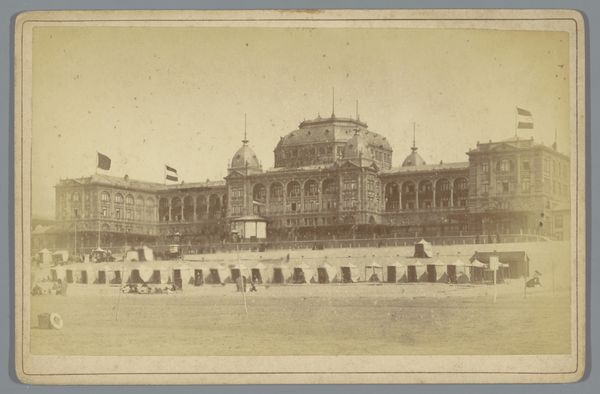
print, photography, gelatin-silver-print
aged paper
toned paper
photo restoration
pictorialism
landscape
photography
gelatin-silver-print
cityscape
genre-painting
Dimensions: height 219 mm, width 279 mm
Copyright: Rijks Museum: Open Domain
Editor: This is "Stierenvechten in Plaza de Toros te Sevilla," a gelatin silver print taken before 1893 by L.L., currently held at the Rijksmuseum. The scene depicts a bullfight. The photo's aged, toned paper lends a strange sense of detachment, and I'm wondering, what can you tell us about the social context in which a photo like this might be created? Curator: Considering this gelatin silver print, made before 1893, it's vital to consider the industrialization of photography at this time. The mass production of gelatin silver plates dramatically changed photographic labor and consumption, allowing for images like this to be reproduced widely. How do you think the ability to distribute images of events like bullfights influenced their cultural importance? Editor: That's interesting! It makes me think about how it could popularize bullfighting to those who couldn't experience it firsthand, almost like a form of mass entertainment facilitated by new technology. It becomes a spectacle, even for those removed from the immediate event. Curator: Exactly. And further, let’s think about the composition. What’s centered in the image? The action, sure, but it is all taking place within the bullring, a product of specific labor practices and architectural design. Can we disconnect the artistic rendering from the labor involved? Consider the social implications of documenting this cultural event. Was L.L. merely recording or, rather, celebrating the event? Editor: I hadn’t thought about the built environment that way – the architecture *as* product. I suppose I had always seen documentary photography as simply capturing reality, rather than being involved in the commodification of events. Curator: Photography is never neutral. Its material base itself tells a social and economic story. Do you see how the context of material conditions transforms the artwork's meaning? Editor: Definitely. Considering the means of production provides a much richer, albeit more complicated, view. I will definitely be keeping this in mind from now on.
Comments
No comments
Be the first to comment and join the conversation on the ultimate creative platform.
